Many tribal rituals and festivals in Odisha’s Koraput District are rooted in the collection and consumption of shared natural resources which has traditionally aided the conservation of commons. Indigenous communities have observed a steady degradation of forest commons due to anthropogenic activities as well as climate change. Experts suggest integrating indigenous knowledge systems into newer administrative frameworks and granting tribal women greater decision-making authority for better maintenance of forest commons. This comprehensive report is by Simrin Sirur
It’s Chaita Parab season in Odisha’s Koraput District, a time when most tribal residents indulge in mahuli, a local brew made from the flowers of the mahua tree. Fresh mango harvests await the assent of the village chieftain and other indigenous leaders of the local committee. The bounty is shared among residents only after the men go hunting and perform a ritualistic animal sacrifice before a deity, praying for prosperity and a good harvest for the rest of the year.
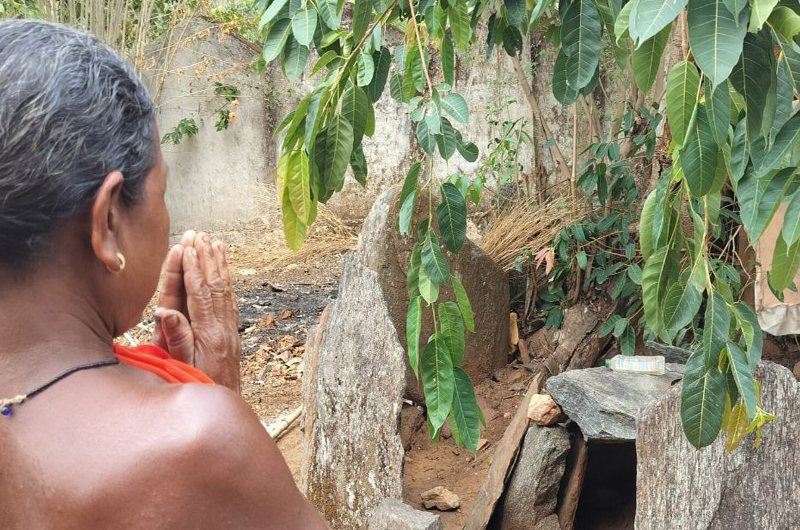
A significant festival heralding the onset of summer in April, Chaita Parab is celebrated by tribes in southern Odisha. Like many rituals in Koraput, it is deeply connected to the collection and consumption of shared natural resources. “Commons have historically defined the boundaries of settlements in Koraput. They are interconnected with everyday life and cultural practices,” says Neha Saigal, the director of gender and climate change at Asar Social Impact Advisors, a research group involved in mapping village forest commons in the district. “Many such traditions are changing gradually.”
Several tribal groups in the region have been witnessing a decline in the common forest resources essential for their livelihoods, cultural traditions, and food security. Beyond factors such as population growth, deforestation and developmental projects, they now face an emerging challenge in the form of unpredictable weather patterns brought on by climate change. In April this year, Koraput was reeling under an early heat wave, with temperatures touching 40℃ — unusually hot for a district located 860 metres above sea level. Forest commons (commons refer to the cultural and natural resources available to all members of a society) are vulnerable to degradation and encroachment because of their ambiguous land tenures and ownership rights. Erratic rainfall and atmospheric warming are eroding these natural resources further with direct impacts on the incomes of the tribal populations whose livelihoods depend on the commons. In the face of these challenges, the centuries-old traditions of conserving and celebrating the commons could show the way in their preservation, say experts.
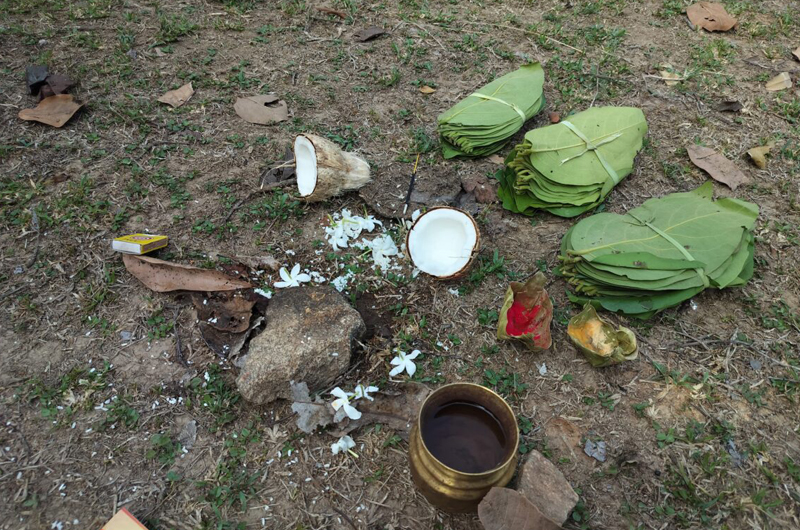
Managing resources through customs
The tribals of Koraput celebrate at least 12 festivals annually with each one grounded in the reverence of a deity who rules over the commons that include shared forest land, streams, grazing pastures, riverbeds and orchards, among other resources. During the post-monsoon festival of Nuakhai Parab, fresh harvests of tamarind, pumpkin leaves, tubers and maize are ceremonially offered to the deity before the community partakes in the harvest. Pus Parab is celebrated in winter, when cattle are honoured. As a part of the celebration, the cattle are fed a khichdi made out of wild tubers and millets, before they are taken to community grazing land, locally called gouchar.
The prayer for abundance relies on presenting the deity with a variety of season’s harvest, says Damu Krisahini, a former naik or chieftain of Badakichab village in Koraput’s Lamtaput Block. “What needs to be presented for each festival has already been ordained,” he says, adding, “Many of these resources come from the forest commons, and there is respect among everyone not to take more than their fair share. The customs must be followed so that these resources are not exhausted.”
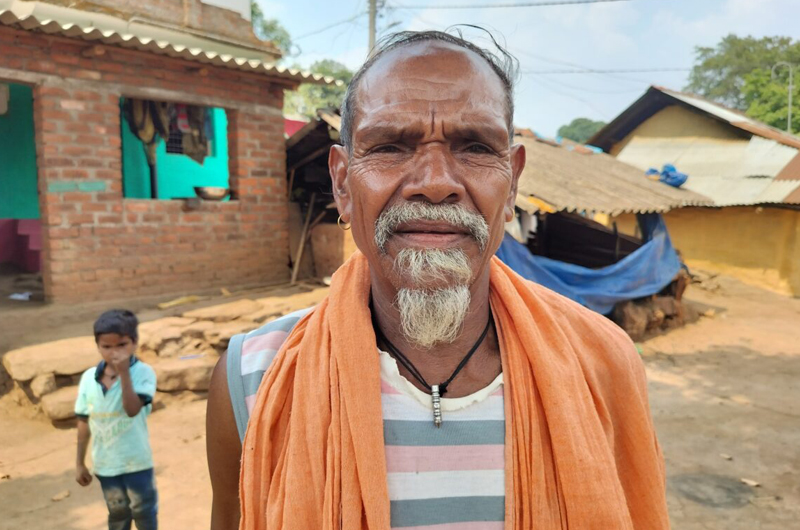
In each village, leadership roles are assumed by a naik, a poojari (priest), and a desari (local healer), who oversee rituals and communal affairs. They also play vital roles in conflict resolution and traditional healing practices. Distinct from a panchayat or a gram sabha recognised under Indian administrative laws, this quasi-council also resolves disputes over the misuse of commons without taking legal routes. Two years ago, a crisis of the commons arose when one resident of Putpandi Village decided to start a fish farm in a community pond. “The council stepped in at the time of the harvest and decided that two-thirds of the profits from the sale of fish need to be shared with other residents. After the incident, there has not been any misuse or dispute over common resources. Everyone fell in line,” says resident Rabi Gadaba.
The poojari and desari also hold authority over the timing of festivals, dictating their commencement and conclusion. The belief is that non-adherence to customs can anger the deity who will put a curse on the council members. Tribal communities such as the Gadabas, the Parajas and the Bhumias also worship sacred groves, patches of virgin forests with special religious significance within a particular culture. Odisha has over 2,000 sacred groves of which 322 are in Koraput. A survey of three sacred groves in five tribal blocks with a population of 300 people in Koraput by the Regional Institute of Education in Bhubaneswar found they collectively contained 66 medicinal plant species and an additional 54 edible plant species. “Unlike other commons, sacred groves are usually left undisturbed, so as to not upset the deity residing in the forest,” explains Sidhanta S. Bisoi, a lecturer at Kandarpur Degree College, Cuttack, who co-authored the study.
A dwindling source of livelihood
While the quasi-council presides over festivities and rituals, the daily management of the forest commons falls on women, the primary collectors of forest produce. A resident of Hathipakhna, a village named after a mammoth elephant-shaped rock situated there, Pratima Gadaba believes that women have a better understanding of sustainable harvesting than men. “If men go, they pull out the whole plant, or cut the whole branch to sell more of it. But women take only what is required and leave the rest so that the plant can regenerate,” she says.
The women in Hathipakhna conserve nine varieties of tubers and eight types of mushrooms among other types of seasonal produce, which are eaten as well as utilised in rituals. The surplus is sold in the market as non-timber forest produce (NTFP), which serves as the primary source of income for most households in the region. A survey by Bisoi, which is awaiting peer-review, found that the tribal communities of Koraput, Nabarangpur and Khurda Districts of Odisha conserve and consume 112 different wild edible plant species. Traditionally, these villages practised shifting cultivation, where tracts of forest on hill slopes were slashed and burned to sow crops for a period of five to seven years, and then left fallow for over a decade for the soil to regain its fertility and the forest to regenerate.
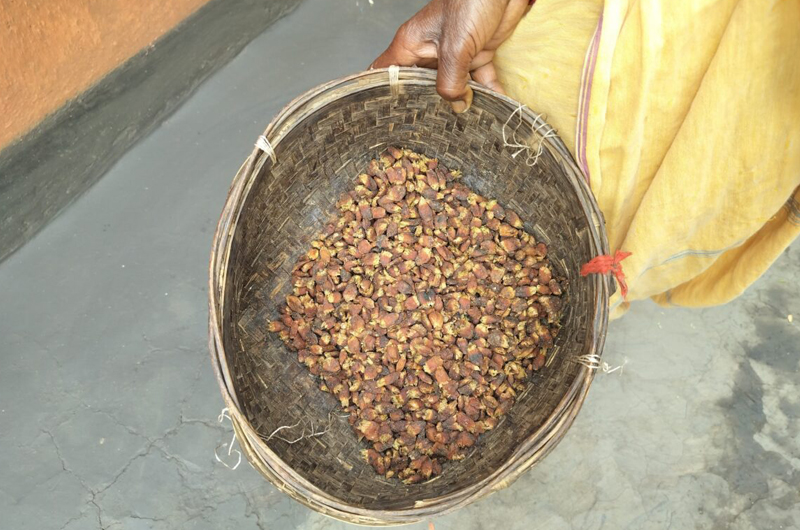
The Forest Department, however, is phasing out this method of cultivation in a bid to prevent deforestation. Fragmented forest patches grew in the district from 688 in 1990 to 702 in 2013. Anthropogenic pressures such as overgrazing, forest fires, shifting cultivation, and illegal logging, which followed the expansion of dams in previous decades had contributed to the decimation of the forests. Changes in land use, and particularly the growth of agriculture, contributed to the decrease of forest areas by 13 per cent between 1990 and 2004 in the district, and the expansion of non-forest areas by 63.7 per cent. Given the region is primarily rainfed, a popular method is step cultivation on hill slopes along with mixed and intercropping methods to maximise yields. “Step cultivation allows water to travel down the slope slowly, which helps reduce soil erosion and allows the water to percolate down through the soil,” says Bandha Mudli, the village naik of Ambagondli Village.
Changing weather affects resources
Changing weather patterns are making traditional cultivation and cultural practices harder to continue. “We had five to six streams which helped irrigate the whole village, but now they’ve all dried up,” says farmer Rama Sisa. Asar Social Impact Advisors, along with Koraput-based NGO, Society for Promoting Rural Education and Development (SPREAD), carried out a mapping exercise with residents in 10 villages, comparing the availability of common forest resources in recent times with 1963 revenue records. According to the report, total forest common land in Badkichab Village shrunk from 895.25 acres in 1963 to 540.19 acres in 2023. This shrinkage was partly because of land diversions for agriculture and in some cases, individual forest rights claims under the Forest Rights Act being carved out of common forest land.
However, a more worrying trend is the reduction in yields. In Hathipakna Village, residents reported a decline in yields of 26 types of tubers, seeds, plants, mushrooms and fruits. The seasonal collection of tubers such as taranga (Dioscorea tomentosa J.Koenig ex Spreng) reduced from five quintals to three quintals, and tamarind from around 50 quintals to 30 quintals. Yields of mohul, sal seeds, and 14 other forest produce have also been hit hard. To cope with the change, residents told Mongabay-India that they plant more resilient varieties like amla, bamboo, guava, neem, jamun, and karanji in the forest commons.
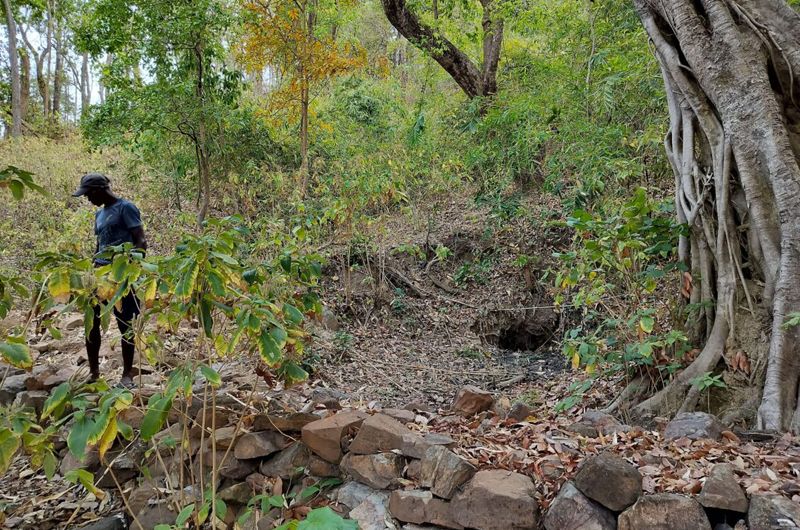
In response to uneven rainfall and water scarcity, some communities, like in Ambagondli Village, have proactively sought ways to adapt. Residents convened a few years ago to brainstorm solutions for water harvesting. Subsequently, they constructed a step-bund system two years ago to collect and store water as it flows down the hill. “We lined the bunds with plants like bamboo, which help stabilise the soil and prevent erosion, while retaining water in the trenches,” explains Mudli. However, despite these efforts, all the trenches dried up in April this year. “While it has certainly helped alleviate water scarcity and soil erosion to some extent, there are still days when it’s completely dry,” he shares.
Economic impacts of forest degradation
The erosion of the commons has also led to changes in diets and habits. “In my childhood, we used to cultivate different varieties of rice. But now we rely on the rice from the public distribution system,” shares Pratima. Koraput also reports a high rate of distress migration during the lean summer months, when farming and forest produce are low. According to Bidyut Mohanty, founder of SPREAD, the enrichment of commons is the right approach. Despite the presence of indigenous committees, leadership in protecting common forest land has somewhat diminished with the introduction of formal administrative systems like the panchayati raj, Mohanty observes. “The question is, how can this knowledge and leadership system be integrated into these newer administrative frameworks? One way is to develop a participatory plan for the protection of the commons and incorporate it into the gram panchayat development level plan,” he points out.
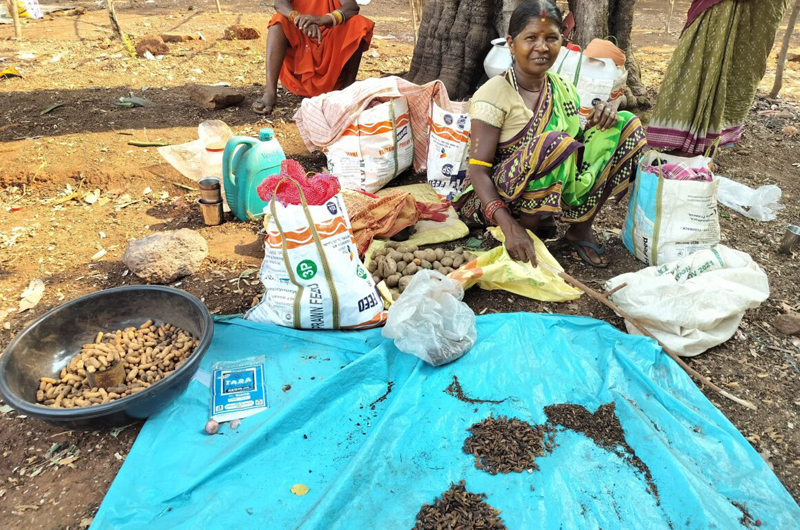
Saigal emphasises the importance of granting women greater decision-making authority in managing the commons, which could contribute significantly to their preservation. “Women are the primary collectors of NTFP and are active participants in self-help groups. They are directly involved in the management of the commons through NTFP collection,” she explains. “Where women have access to forums like self-help groups, they can use their decision-making power to both earn a livelihood from NTFP collection and advocate for their sustainable use, thereby ensuring the preservation of the commons.” Meanwhile, the importance of observing traditions that rely on biological diversity remains central to the daily lives of tribals in Koraput. “Even if the resources are harder to find now, we won’t stop looking for them until we satisfy the deity,” said Rabi Gadaba.
(Courtesy: Mongabay India/ india.mongabay.com)


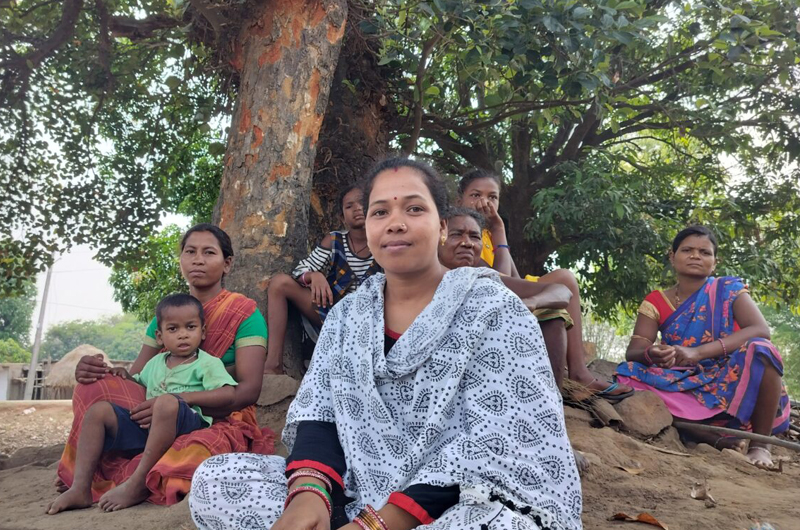
 from Webdoux
from Webdoux